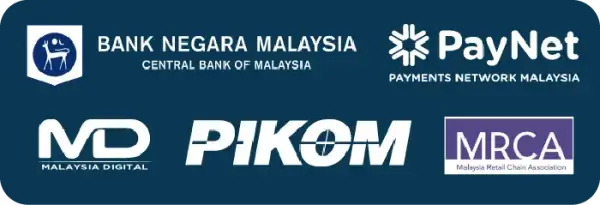
Buy Now, Pay Later (BNPL) in Malaysia is growing rapidly and projected to surpass RM20 billion in transaction value by 2030, based on market estimates from industry research. Leading providers such as Atome, SPayLater, Grab PayLater, and PayLater Malaysia are driving this expansion, offering flexible payment options that boost average order value, reduce cart abandonment, and support customer retention.
However, businesses adopting BNPL must also manage potential risks, including default, operational complexity, and regulatory changes. The upcoming Consumer Credit Act 2025 is expected to introduce licensing and compliance requirements on BNPL operators in Malaysia, marking a pivotal step toward a more structured and accountable BNPL ecosystem.
What Is BNPL and How Does It Work from a Merchant’s Perspective?
BNPL lets merchants offer instalment-based payment options while getting paid upfront by providers.
Customers purchase a product and pay later in instalments. The BNPL provider pays the merchant the full amount (minus fees) and collects instalments from the customer. Providers use behavioural or credit checks to approve customers. Merchants benefit from upfront payment without bearing direct credit risk.
Why Adopt BNPL for Your Business? What Are the Benefits?
BNPL drives sales, lifts average order value, and attracts cost-sensitive customers.
- Reduce cart abandonment: Customers are more likely to complete purchases with flexible payment options.
- Increase order size: Customers tend to spend more per transaction when they can split payments.
- Expand market reach: Young consumers and first-time buyers prefer BNPL over credit cards.
- Encourage repeat business: Flexible financing fosters brand loyalty.
Read more: BNPL For Small Businesses: How It Can Boost Sales
What Are the Major BNPL Players in Malaysia and How Do They Compare?
Atome, SPayLater, and Grab PayLater dominate, but newer players like PayLater Malaysia offer niche advantages.
Provider | Best For | Key Features | Pros | Cons |
Atome | Fashion & lifestyle brands | 3-month interest-free instalments | Widely accepted, strong brand appeal | Shorter tenure options only |
SPayLater (Shopee) | Shopee-based businesses | Up to 24-month plans integrated with Shopee | High user base, seamless Shopee integration | Limited outside Shopee ecosystem |
Grab PayLater | Omni-channel businesses | Flexible plans like 4, 8 & 12, pay-later or monthly instalment | Ecosystem integration (Grab, Food, Pay) | Approval process can be strict |
PayLater Malaysia | Electronics & big-ticket items | Longer tenures (up to 36 months) | Local-focused, transparent pricing | Smaller brand presence |
Source: Compiled from official provider websites (Atome, Shopee SPayLater, Grab PayLater, PayLater Malaysia).
What Are the Risks and Challenges When Running a BNPL Business?
BNPL can strain operations if risks are not properly managed.
- Default Risk: Customers may fail to repay instalments, especially with long tenures.
- Integration Overhead: BNPL needs seamless tech integration with POS and ecommerce systems.
- Cash Flow Mismatch: Merchants receive funds upfront, but may bear chargebacks or refund exposure.
- Fraud and Abuse: Opportunistic users can exploit weak checks.
- Customer Support Load: Managing BNPL disputes adds operational cost.
How Will Regulation in Malaysia Shape the Future of BNPL?
The Consumer Credit Act 2025, which has been passed by Parliament and is expected to be gazetted by the end of 2025, will introduce new licensing, disclosure, and lending requirements for credit-related businesses once it comes into effect.
- BNPL providers will be required to obtain licences to operate legally in Malaysia.
- Lending and credit practices will need to align with standards of fair treatment, transparency, and responsible lending.
- Interest and fee models (such as flat-rate calculations and the Rule of 78) will be subject to clearer disclosure requirements to prevent misleading representations.
- Consumer capacity assessments will likely become mandatory before loan or instalment approvals.
- Penalties for non-compliance may include fines, suspension, or revocation of licences once enforcement begins.
Read more: The BNPL Boom Meets Regulation: How Malaysia’s New Credit Law Changes the Game
How to Evaluate and Choose a BNPL Provider for Your Business
Choose based on cost, integration, sector relevance, and risk-sharing model.
- Fees & Margins: Understand transaction fees, merchant service charges.
- Customer Experience: Ensure smooth UX to boost uptake.
- Platform Compatibility: Must integrate with your checkout, POS, and accounting.
- Support & Dispute Resolution: Review SLAs and merchant support.
- Risk Management: Who bears the risk, how are refunds handled?
- Regulatory Readiness: Choose providers complying with the new credit regulations.
Step-by-Step Implementation Checklist
A clear roadmap to help merchants implement BNPL in 2025.
- Feasibility analysis: Estimate ROI based on current Average Order Value (AOV) and conversion rate.
- Provider selection: Compare providers’ pricing, user experience (UX), sector focus.
- Integration setup: Configure ecommerce/POS with provider plugin or API.
- Staff training: Ensure teams understand workflows, refunds, and support.
- Go live & promote: Display BNPL options clearly on site and in-store.
- Monitor metrics: Track take-rate, uplift, default rate, and customer feedback.
- Regulatory compliance: Prepare for audits, disclosures, and documentation under CCA 2025.
Conclusion: Is BNPL Right for Your Business in 2025?
For many Malaysian businesses, BNPL is a strategic growth tool. But success requires choosing the right provider, managing costs, and preparing for regulatory shifts. Done right, it offers a win-win for both merchants and consumers.
If you’re exploring BNPL or want a secure way to accept multiple payment methods, consider Paydibs as your trusted payment terminal partner to simplify integration and grow with confidence.
Legal Disclaimer: All brand names, trademarks, and logos displayed on this website are the intellectual property of their respective owners. Their use herein is solely for identification purposes without written consent or direct affiliation from the respective owner.
Frequently Asked Questions About BNPL
What is BNPL and how does it differ from credit cards?
BNPL offers short-term, interest-free instalments with fewer approval requirements compared to credit cards. It appeals especially to younger consumers and those without traditional credit access.
Can any merchant use BNPL in Malaysia?
Yes, most BNPL providers accept applications from SMEs, subject to industry and integration compatibility.
How much does BNPL cost merchants?
Merchant fees range from 2% to 6% per transaction, depending on transaction volume and risk profile.
Who bears the risk in BNPL transactions?
Typically the BNPL provider, though some models involve shared liability or clawbacks.
Will BNPL be regulated in Malaysia?
BNPL is expected to come under regulation once the Consumer Credit Act 2025 (CCA 2025) takes effect. The Act will introduce licensing and compliance requirements for BNPL providers to ensure responsible lending and consumer protection.
What KPIs should I track after adopting BNPL?
Key metrics: BNPL take-rate, average order value uplift, default rate, and net ROI from BNPL sales
Recent Posts
Categories
Our Partners :





Paydibs is a leading payment solutions provider committed to simplifying transactions for businesses of all sizes.

